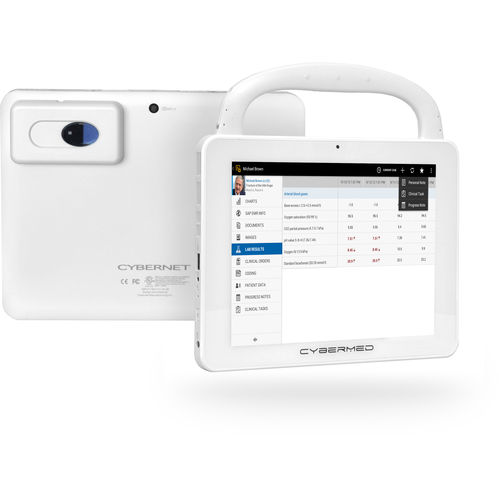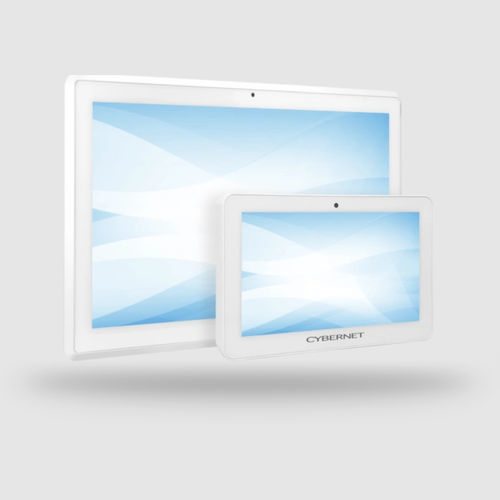
#Industry News
Barcode Scanning in Healthcare: Benefits, Uses, & Adoption
Barcode scanners can radically improve a hospital's operations. Learn how here.
Barcode Scanning in Healthcare: Benefits, Uses, & Adoption
Even a small hospital is a massively complex enterprise with countless moving parts. Dispensing medication, managing inventory, and leading patients through the treatment process all require massive amounts of book-keeping.
Tracking all of these different elements is beyond any one person’s ability. Fortunately, technology exists to accomplish this task efficiently and affordably. Barcode scanning is readily available and easy to implement in a hospital’s daily operations.
A Brief Overview of Barcode Technology
While we interact with barcodes and scanners every time we go shopping, not many people actually understand how they work. At their most basic, barcode systems consist of three elements: the barcode itself, a scanner, and a software program that translates the information contained in the barcode.
A barcode translates binary code into the lines of black on a white background that you’ve probably seen on every product you’ve ever purchased. When a barcode scanner shines an incandescent light or laser beam over the code, it detects how much light is reflected back at it. The black sections of the barcode reflect less light than the white sections, which creates the 1’s and 0’s of binary code. A single barcode can contain 20 characters worth of information.
An inventory tracking program can use this information to track the movement of anything the barcode is attached to. In a retail environment, this is done at the point of sale to tell the store the item has left its inventory, and the customer must be charged an appropriate price (which the inventory software will tell them).
Applications of Barcode Scanning In Healthcare
In healthcare, identifying and tracking assets is critical for treating patients effectively. Medication can have severe side-effects if administered incorrectly or to the wrong patient, making it critical that only the intended patient gets their dose. Outside of medication dispensation, barcodes are also used to track assets and equipment, which helps providers know what tools are available and where they're located.
Medication Administration
When providers administer medicine, they first scan the barcode on the bottle's label to check with the patient's EMR on their medical computer to ensure it is the correct medication. This helps protect patients from getting the wrong medicine.
Patient Identification
As part of the admission process, many hospitals give patients a bracelet with a barcode printed on it that contains their personal health information. By scanning this barcode, a provider can immediately pull up that patient's medical records rather than having to search for them.
Blood and Tissue Tracking
One of the most important areas where barcodes are used is in blood banks. Under FDA regulations, all blood and blood components (like plasma and red blood cells) must have barcodes containing information such as blood type, the donor's ID number, and source of the blood. This helps prevent patients from receiving the wrong blood type during a transfusion.
Similar practices are used for other donor tissue types, such as donor organs and skin grafts. Doing so speeds up the transportation process and ensures compatibility between the donor and the recipient, two factors that are critical for preventing rejection of the donor tissue.
Medical Asset Tracking
Tracking the assets and tools that a hospital staff uses is another key area where barcodes make a difference. As part of surgery prep, medical teams must sterilize their instruments so that they can be safely used. Applying barcodes to these tools and scanning them as they're prepared lets technicians keep track of what's been sterilized and what else is needed.
Asset tracking is also necessary for everything from IV stands to bandages, letting a hospital’s staff know what is being used where, and when they’re close to running out of consumable items and need to order replacements. This enables providers to focus more on delivering effective care than tracking down tools.
Benefits of Barcode Scanning in Healthcare
Barcode scanning brings numerous benefits to a hospital's daily routine, such as:
Enhanced Patient Safety
Barcode scanning enhances patient safety by allowing providers to reference a patient’s records and assigned medication immediately. Doing so ensures that patients only receive the medication they are supposed to, preventing medical errors from occurring. Scanning patient wristbands also allows providers to immediately access all prior notes written about the patient and their condition, empowering providers with more information.
Streamlined Workflow and Efficiency
Implementing barcode scanning greatly reduces the bureaucratic workload on providers. Rather than digging through cabinets of files for patient records, a provider can simply scan the patient’s ID bracelet and immediately pull up the necessary information on that individual. By implementing barcodes on equipment, they can also track their tools more easily. Both of these practices let providers spend more time treating patients.
Reduction of Wastage or Improper Use
Preventing wastage is a critical concern for anyone who manages a large inventory of consumable or perishable items. Scanning barcodes and referencing an inventory tracking system alerts staff when certain items are close to expiring, should be used soon, or when stocks of consumables are close to being depleted. Requiring staff to scan and sign out certain items also helps prevent their illegal misuse, such as selling narcotics for illicit purposes.
Barcode Implementation Considerations
Before you can start benefiting from using barcodes in your daily workflow, there are some important considerations to address:
Integration with Existing Systems: If you already use EMR or digital inventory management systems, check if they can integrate barcode scanning capabilities.
Staff Training and Adoption: Your staff will need proper training to adopt and effectively use barcode scanners, printers, and other related tools. Thankfully, the prevalence of barcodes in day-to-day life makes this step easier than other new tools.
Cost: Implementing any new piece of technology will come with a price. Before purchasing equipment for barcode scanning, make sure your budget can bear the cost.
Data Security and Privacy Concerns: Any device that reads barcodes containing or linking to patient data must include stringent security measures, such as Imprivata encryption and single sign-on credentials.
Scalability and Customization: When shopping for a hardware manufacturer and partner, it’s critical to make sure that their manufacturing capacity can support your demand and that they can include any customizations you may require.
Computers with Integrated Barcode Scanners
If your hospital or healthcare group wants to use barcode scanners in your day-to-day operations, consider computers with integrated scanners from Cybernet Manufacturing. Our PCs and tablets with scanners make implementing barcode technology effortless while still coming with the full range of features and certifications required by the healthcare field. Contact us today - our team would be more than happy to explain how our devices can help prevent medical errors and streamline workflows.







